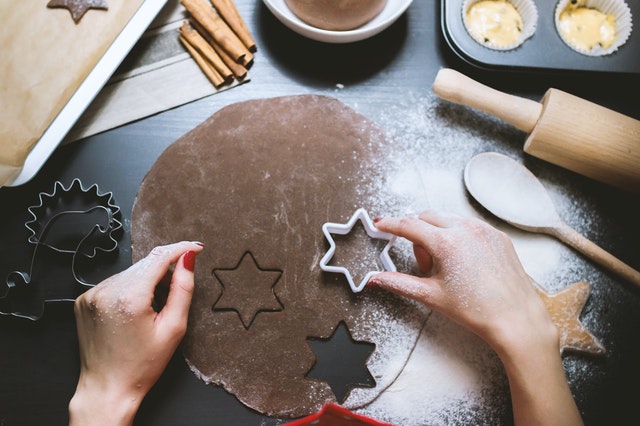Cooking is fun until it comes to saving time and making life a bit easier. Using a meal kit delivery service is one way to have a time-efficient yet affordable kitchen experience via Dinnerly Coupons. However, if you still want to have homemade food, you can learn some cooking skills that are not only vital for the professionals, but for people cooking at home too.
The seven different cooking skills that can help you to be a good chef are discussed here in this article. Starting with…
1. Mise En Place
Mise En Place is a French phrase that means “putting in place” and is perfect for prepping kitchen equipment and food before serving. The skills are commonly used in professional kitchens and cooking shows.
Use The Mise En Place
It is easy to apply Mise En Place through these simple guidelines:
- Develop a plan and have your recipe handy.
- Meet all your ingredients and equipment needed for cooking.
- Wash, cut, dice, chop and consider all your ingredients, one by one.
- Put them in proper-sized dishes, bowls, and containers for easy taking.
- Place your ingredients near your cooking place for better accessibility.

2. Understanding Flours
Using flour looks like a simple task. But if you go to the supermarket for flour, you will face multiple varieties. A less thorough recipe would need flour, so it is important to know which type of flour is best for your needs.
The selection of flour is also important as you are looking to add nutritional benefits or have dietary restrictions. Some common household flours can be found at grocery stores. Flour is the foundation ingredient for bread, cakes, and pastries.
The strength of flour is represented in protein quality and quantity. It varies from flour to flour. The quality of the protein indicates the strength of the flour that results in bread making. It is a common practice at flour mills to blend hard spring wheat with hard winter wheat to produce flour with high quality.
3. Unlocking Smell
If you are cooking and the smell remains for hours or days throughout your house it can be quite unpleasant. This can be removed by adjusting your cleaning routine. There are several ways to handle these smells. A few cleaning tips are:
- Use Of Vinegar – Vinegar is the best tool for natural cleaning. It can help get rid of any disgusting odor. You can use the mixture of vinegar and lemon juice to wipe down surfaces that were used for the food preparation. Vinegar also defuses flying smells in the air. By putting a pot on the stove and filling it with a cup of water and three tablespoons of vinegar to boiling it for several minutes can knock out the funky smell from your kitchen.
- Create Sweet-Smelling – A pleasing cinnamon smell can be created in your kitchen by putting a pot containing three cups of vinegar and a handful of cinnamon sticks on to simmer for a few hours. Use the same pot for cooking the meal, and it will freshen the air.
- Allow Fresh Air – Open the windows before you start cooking if the weather is not excessive. This will circulate the air and let some of the smell be released.

4. Enjoy The Process
It is important to enjoy your cooking. The following four tips are important tools that will help you to enjoy your cooking in the kitchen.
- Equip Yourself With The Right Tools – Your cooking skills will be improved with the right equipment. Invest in some good-quality cooking tools, as it will save your time and tears and make a difference in your cooking skills.
- Know Your Ingredients – Understand your ingredients for cooking. It will allow you to adjust your recipe accordingly. It is also good practice to use fresh, high-quality ingredients to add some more flavor to your dishes.
- Understand Basic Cooking Techniques – The best way to learn the basic skills is to take Cuisine Techniques short courses to understand the use of a knife, poaching, and preparing stock.
- Practice – To get perfect in your cooking, just keep practicing for steady progress. If you are feeling confident with your basic cooking and have much knowledge of the ingredients, don’t be afraid to experiment with anything new.
5. Being Adaptable
It is good to be flexible and ready to change your plans or ideas on any new information. There could be situations like adapting an order to a customer’s choice that can change the way you make a dish. It is better to practice your adaptability skills through new ways to complete your work in different situations and learn to accept changes in your preferred methods.
The more flexible you are, the more it helps you to cook a better meal. A cook should choose the right ingredients for a new dish and can make sudden adjustments to a dish before serving.

6. Creating Texture
Food texture can be just as important as flavor. There is a large variety of foods with vastly different textures and different people may have different descriptions for different types of food. Food texture is the most important factor to judge the physical assessment of the food quality.
Tenderness is an important textural characteristic in determining the quality of food. Individual preference is also a factor of different textures as getting the cooking time spot on and choosing appropriate sides are all major factors in creating a satisfying texture.
7. Combining Taste
Ingredients can work together to complement one another. To create a balance experience, follow the five basic tastes for combing taste.
- Taste & Flavor – Taste and flavor are often used interchangeably, however, they are different from each other. The flavor is a sensory experience and taste is more of an alert. Flavor is more about texture, smell, and taste of food. Whereas, taste is your taste buds knowing if it is sweet, salty, or sour.
- Sweet – Sweet flavors can add a unique depth to salty dishes. If a meal is too sweet, you can fix it with the ingredients you have on your hand.
- Salty – Salt can improve and balance out a meal. You can achieve salt with other ingredients as well, including soy sauce, cheese, olives, etc.
- Bitter – People are more sensitive about bitterness. If the meal is too sharp, you can add a sweet component like sugar, honey, or syrup to overcome bitterness.
- Sour – A sour taste can brighten up a dish with the combination of the right ingredients. You can have spicy foods or add essential flavors to a bland dish with just an addition of lemon or lime. Buttermilk, vinegar, lemon are all sour-tasting ingredients.

































